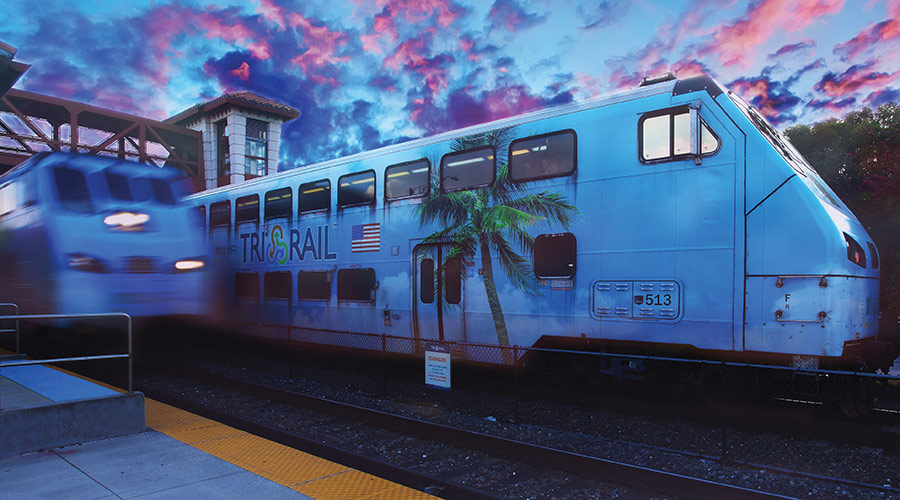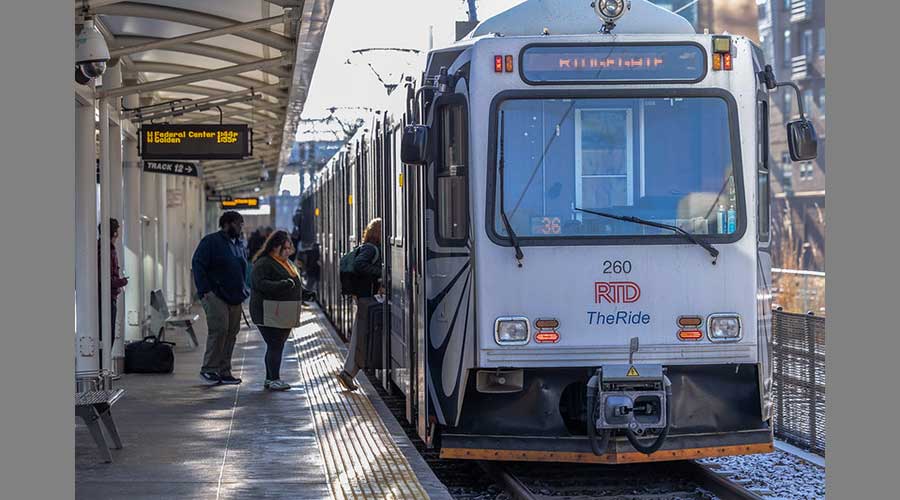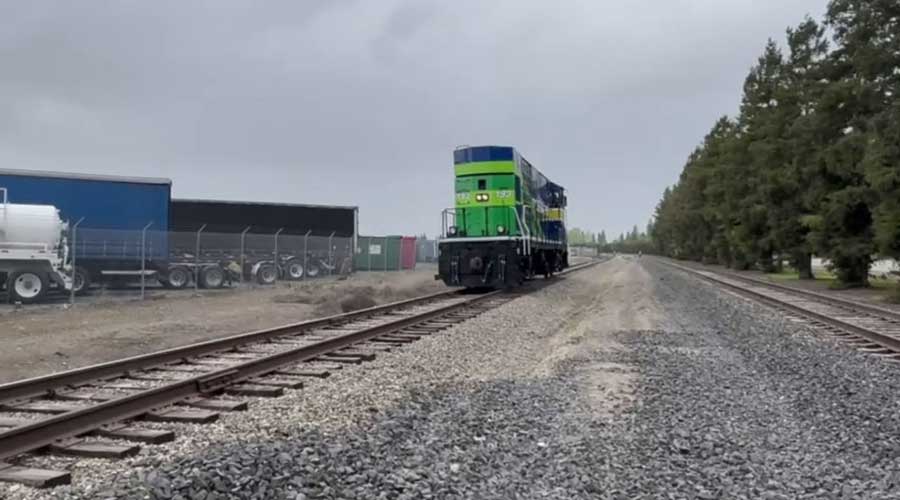Newsletter Sign Up
Stay updated on news, articles and information for the rail industry
Stay updated on news, articles and information for the rail industry
RAIL EMPLOYMENT & NOTICES
Rail News Home
High-Speed Rail
Rail News: High-Speed Rail
2/12/2010
Rail News: High-Speed Rail
APTA/UIC's High Speed Practicum - Chicago: Day Three
advertisement
The American Public Transportation Association (APTA)/Union Internationale des Chemins de fer’s (UIC) International Practicum on Implementing High Speed Rail in the United States — the Chicago event I attended, as well as the other practicums held this week in Washington, D.C., and Los Angeles — featured presenters from Europe and Asia, representing such rail groups as Spain’s Renfe, Japan Railway Group, Germany’s DB International, Italy’s Italferr, France’s SNCF and Switzerland’s SBB. All shared lessons learned and strategies used to develop, implement and operate their respective high-speed systems.
But it’s up to the seminar attendees to determine how they can take that advice and translate it to a U.S. high-speed environment — and never were the differences between international high-speed systems and what will become the U.S. high-speed system more apparent than on that final half-day of the practicum.
The program consisted of two sessions: one on high-speed economical, financial and managerial considerations, and another on high-speed projects in the region.
During the day’s first session, high-speed agency execs from France, Switzerland, Japan and Portugal discussed high-speed funding and financing strategies that have worked for them. But it was the session’s last speaker — Jeffrey Parker, president of Massachusetts-based transportation advisory firm Jeffrey A. Parker & Associates Inc. — that put those financing strategies (public-private partnerships in particular) into a U.S. perspective.
“This is something that will have to evolve — we just don’t have the body of experience in this country,” he said.
Parker went on to talk about why it’ll be difficult to secure private financing for U.S. high-speed rail systems, and why the distribution of stimulus funds poses some challenges of its own. His thoughts:
• “It’s difficult to speculate about ridership forecasts. And it’s one thing to make a forecast; it’s another to invest your money behind it.”
• “Now that $8 billion is available, that poses its own challenges — the conditions for receiving that money are heavily driven by job creation. There’s pressure to become shovel ready as quickly as possible to get visible work /jobs out there. However … there needs to be an informed decision-making process about the type of infrastructure, design of rolling stock … there’ a huge risk that we may get ahead of ourselves here if we’re not careful.”
• “When WMATA’s rail system was built in D.C., it was supposed to pay for itself and we all know how that went. We may reverse those trends with high-speed rail, but from a financial standpoint, nobody’s rushing out to write a big check to do that.”
• “Right now, we’re using one-time revenues and we need to identify recurring revenue sources to deal with the recurring costs we’re going to bear. The challenge now is the fiscal capacity of non-federal partners to match stimulus funds and absorb risks during construction and operations. What if there’s an environmental issue that comes up and causes a delay? Who will cover those risks? In most cases, state DOTs are fiscally constrained.”
• “We’re used to the pace at which things happen in this country. We have funding, environmental and procurement issues and a lot of social equity considerations to take into account when we’re talking about 150, 200 mph trains. We don’t know that the FRA has developed standards, how we’re going to meet those standards and the politics of these things are all very difficult to manage.”
“That’s the bad news and harsh realities of doing business in the U.S.,” said Parker.
But there is a bright side: The United States does have some opportunities and advantages when it comes to high-speed funding, and Parker had some additional suggestions on how to successfully implement and operate high-speed rail in the U.S.
• “Nationally, we certainly have the experience in dealing with large public works projects.”
• “In the past, we’ve used Full Funding Grant Agreements on the transit side, so we do have a mechanism for funding these types of projects.”
• “In places where we’re talking about implementing high-speed rail on shared corridors, we can work with the freight railroads to form partnerships. We need to coordinate investments with them so they can move at high speeds in mixed traffic with high-speed passenger trains.”
• “There’s a creative role for freight carriers. We’re going to be on their tracks in a lot of cases. They have a lot of experience, they have the equipment to go out and lay 50 miles of track. they have the know-how to operate trains and sequence them, they have the operating control systems, and rather than overlay something new on top of them, I think if we can find ways to creatively integrate them in a way that is profitable, manages their risks and deals with some of their liability exposures, that will be critical for success in the United States.”
• “There have been a lot of discussions about Buy America and building trains in the United States. The fact is we have a lot of places that are making high-speed trains today. Do we need another set of places in the U.S. to build 10 trainsets here, 20 there? I think we have a real opportunity, at least in some of the smaller start-up situations, to buy smaller quantities, get the FRA to come up with some guidelines that will allow us to bring production line equipment here from other countries, at least until we’re building larger quantities. If we create an over-supply of rolling stock manufacturers in this country, I don’t know that we’re doing ourselves a service.”
The practicum ended with presentations on high-speed projects proposed in the Midwest, Texas and Florida. Representatives were on hand to outline their respective projects (or, in the case of Texas, proposed project).
If the full attendance (even for the last two sessions, despite their kiss-of-death timeslot) was any indication, the three-day practicum was a useful learning experience for those who sat in on the Chicago seminar. I’m looking forward to seeing what other sorts of high-speed events APTA and UIC will put together under their new partnership.
— Angela Cotey
But it’s up to the seminar attendees to determine how they can take that advice and translate it to a U.S. high-speed environment — and never were the differences between international high-speed systems and what will become the U.S. high-speed system more apparent than on that final half-day of the practicum.
The program consisted of two sessions: one on high-speed economical, financial and managerial considerations, and another on high-speed projects in the region.
During the day’s first session, high-speed agency execs from France, Switzerland, Japan and Portugal discussed high-speed funding and financing strategies that have worked for them. But it was the session’s last speaker — Jeffrey Parker, president of Massachusetts-based transportation advisory firm Jeffrey A. Parker & Associates Inc. — that put those financing strategies (public-private partnerships in particular) into a U.S. perspective.
“This is something that will have to evolve — we just don’t have the body of experience in this country,” he said.
Parker went on to talk about why it’ll be difficult to secure private financing for U.S. high-speed rail systems, and why the distribution of stimulus funds poses some challenges of its own. His thoughts:
• “It’s difficult to speculate about ridership forecasts. And it’s one thing to make a forecast; it’s another to invest your money behind it.”
• “Now that $8 billion is available, that poses its own challenges — the conditions for receiving that money are heavily driven by job creation. There’s pressure to become shovel ready as quickly as possible to get visible work /jobs out there. However … there needs to be an informed decision-making process about the type of infrastructure, design of rolling stock … there’ a huge risk that we may get ahead of ourselves here if we’re not careful.”
• “When WMATA’s rail system was built in D.C., it was supposed to pay for itself and we all know how that went. We may reverse those trends with high-speed rail, but from a financial standpoint, nobody’s rushing out to write a big check to do that.”
• “Right now, we’re using one-time revenues and we need to identify recurring revenue sources to deal with the recurring costs we’re going to bear. The challenge now is the fiscal capacity of non-federal partners to match stimulus funds and absorb risks during construction and operations. What if there’s an environmental issue that comes up and causes a delay? Who will cover those risks? In most cases, state DOTs are fiscally constrained.”
• “We’re used to the pace at which things happen in this country. We have funding, environmental and procurement issues and a lot of social equity considerations to take into account when we’re talking about 150, 200 mph trains. We don’t know that the FRA has developed standards, how we’re going to meet those standards and the politics of these things are all very difficult to manage.”
“That’s the bad news and harsh realities of doing business in the U.S.,” said Parker.
But there is a bright side: The United States does have some opportunities and advantages when it comes to high-speed funding, and Parker had some additional suggestions on how to successfully implement and operate high-speed rail in the U.S.
• “Nationally, we certainly have the experience in dealing with large public works projects.”
• “In the past, we’ve used Full Funding Grant Agreements on the transit side, so we do have a mechanism for funding these types of projects.”
• “In places where we’re talking about implementing high-speed rail on shared corridors, we can work with the freight railroads to form partnerships. We need to coordinate investments with them so they can move at high speeds in mixed traffic with high-speed passenger trains.”
• “There’s a creative role for freight carriers. We’re going to be on their tracks in a lot of cases. They have a lot of experience, they have the equipment to go out and lay 50 miles of track. they have the know-how to operate trains and sequence them, they have the operating control systems, and rather than overlay something new on top of them, I think if we can find ways to creatively integrate them in a way that is profitable, manages their risks and deals with some of their liability exposures, that will be critical for success in the United States.”
• “There have been a lot of discussions about Buy America and building trains in the United States. The fact is we have a lot of places that are making high-speed trains today. Do we need another set of places in the U.S. to build 10 trainsets here, 20 there? I think we have a real opportunity, at least in some of the smaller start-up situations, to buy smaller quantities, get the FRA to come up with some guidelines that will allow us to bring production line equipment here from other countries, at least until we’re building larger quantities. If we create an over-supply of rolling stock manufacturers in this country, I don’t know that we’re doing ourselves a service.”
The practicum ended with presentations on high-speed projects proposed in the Midwest, Texas and Florida. Representatives were on hand to outline their respective projects (or, in the case of Texas, proposed project).
If the full attendance (even for the last two sessions, despite their kiss-of-death timeslot) was any indication, the three-day practicum was a useful learning experience for those who sat in on the Chicago seminar. I’m looking forward to seeing what other sorts of high-speed events APTA and UIC will put together under their new partnership.
— Angela Cotey


 2025 MOW Spending Report: Passenger-rail programs
2025 MOW Spending Report: Passenger-rail programs
 Gardner steps down as Amtrak CEO
Gardner steps down as Amtrak CEO
 Guest comment: Oliver Wyman’s David Hunt
Guest comment: Oliver Wyman’s David Hunt
 Women of Influence in Rail eBook
Women of Influence in Rail eBook
 railPrime
railPrime







